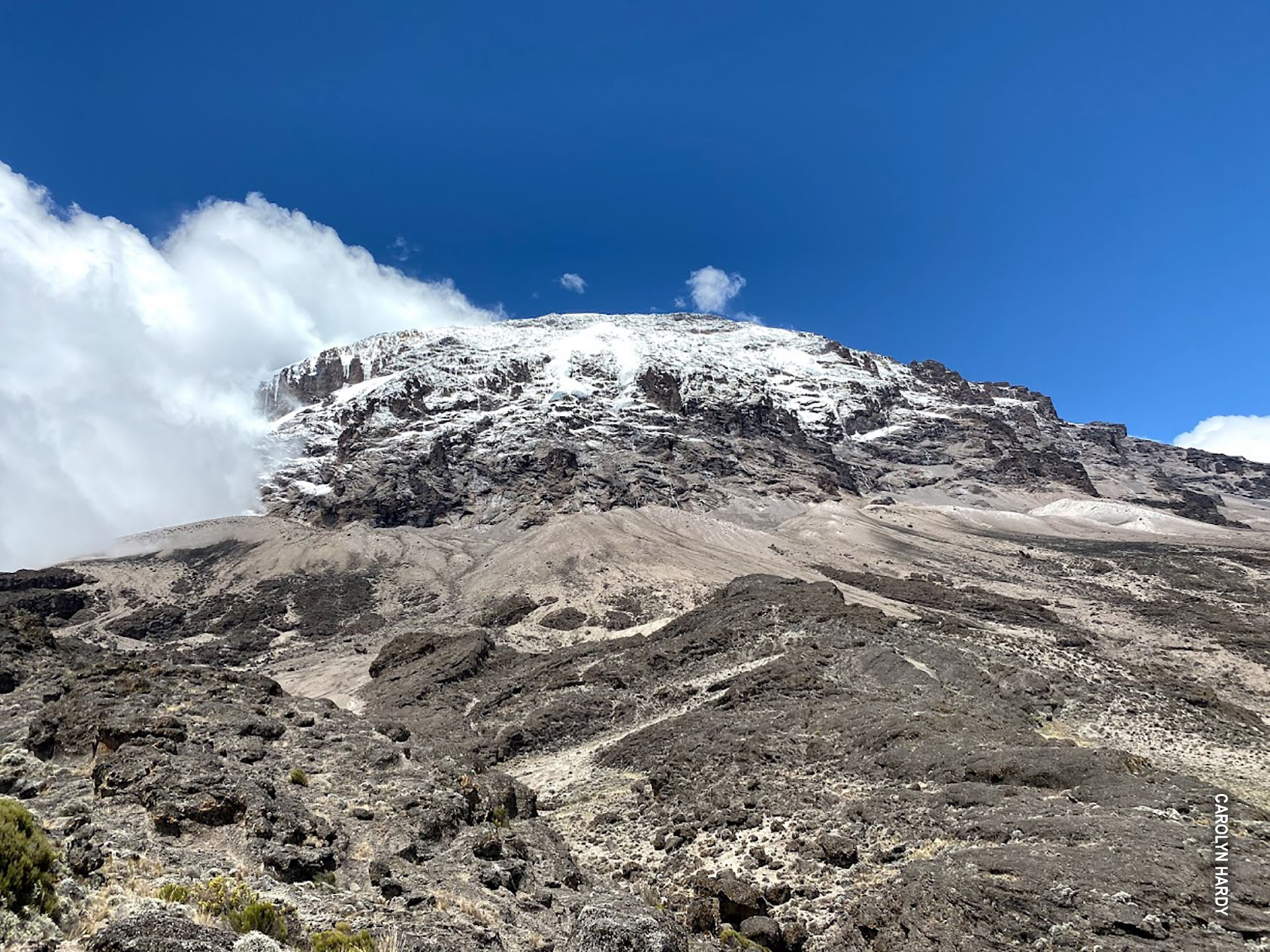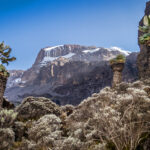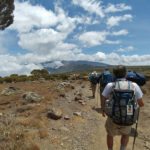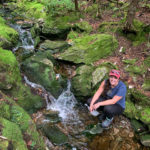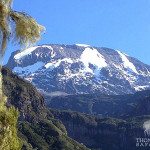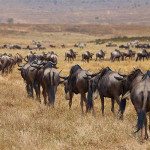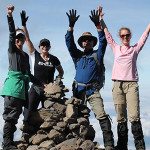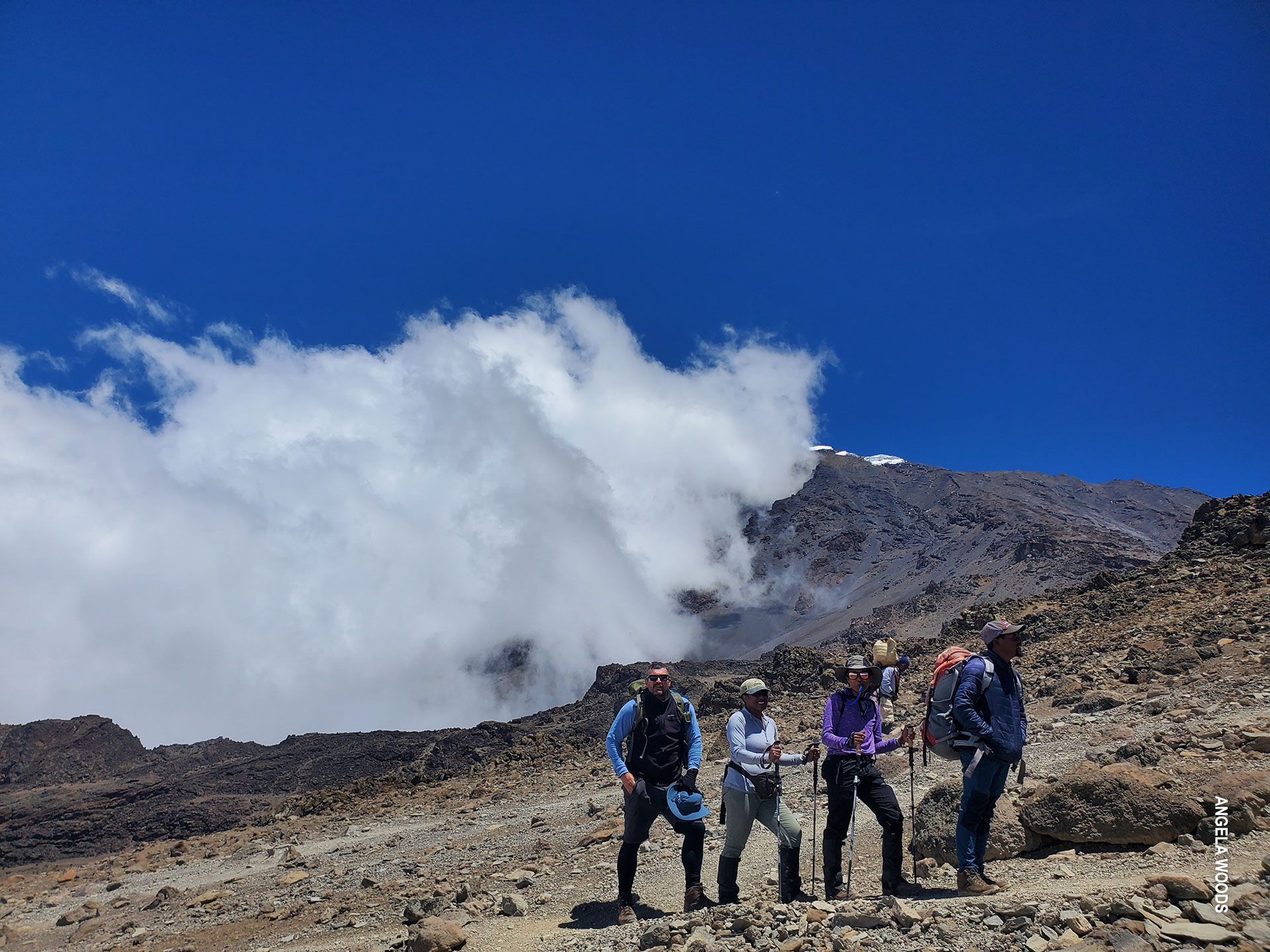
When you trek through Kilimanjaro’s fourth climate zone, the alpine desert, you’ll feel like you just stepped out of a spaceship. “It’s like being on the moon,” says Thomson staffer Carolyn.
At 13,200′ – 16,000′, the fluctuating conditions present their own challenges: the sun can be intense, the wind might be harsh, and the temperatures drop drastically at night.
“The rainforest is so exotic, the arctic zone is so exciting, and even the heath and moorland zones have new plants to appreciate, so the alpine desert often gets forgotten,” says Carolyn.
Why, then, do our Kilimanjaro experts rave about the alpine desert? “Yes, it’s pretty barren,” says Angela, Thomson’s Manager of Guest Services, “but you appreciate every unexpected sight under that big blue sky.” It’s a unique and awesome experience where you start to understand the scale of your adventure and feel your preparation and training paying off.
With help from our Kilimanjaro experts, here’s what you can expect in the alpine desert.
An Alien Environment
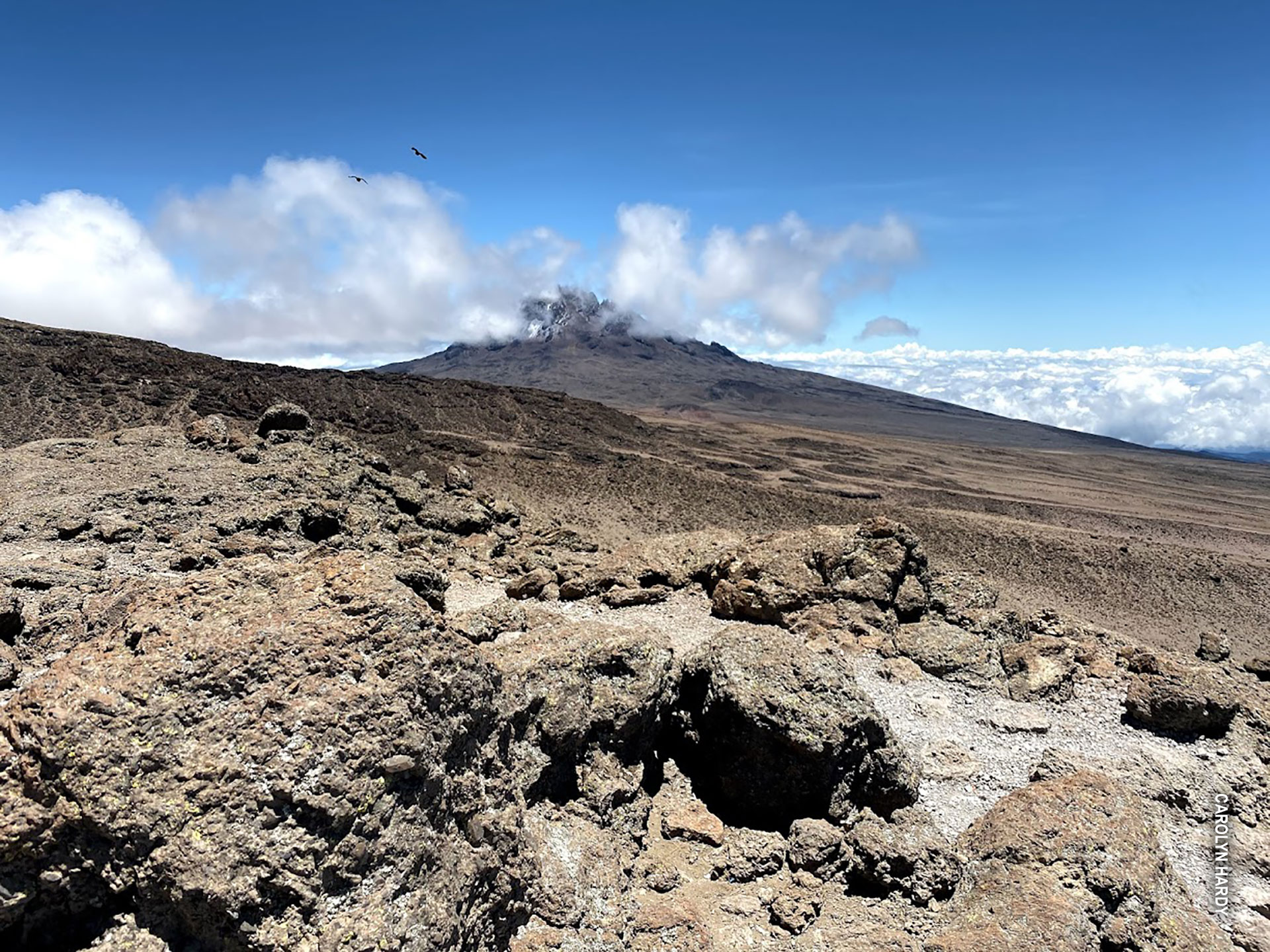
If someone showed you a picture of the alpine desert and told you it was a set from a sci-fi movie, you’d believe them. It’s an ashy landscape, befitting Kilimanjaro’s volcanic nature. Despite its eruptive past, there is a sense of peace in the alpine desert.
“Everything is a sort of greige, it’s rocky and desolate,” says Carolyn. “As you trek up from Karanga to Barafu, the rocks you kick with each step tumble and clink together, creating a soft geological jingle. Those little clinks create the most unique soundscape to the trek.”
The views are astonishingly gorgeous
The terrain’s dusty browns contrast with the crisp cerulean of the sky in what feels like nature’s technicolor showcase. If that wasn’t enough, now wrap your head around the fact you’ve trekked above the clouds!
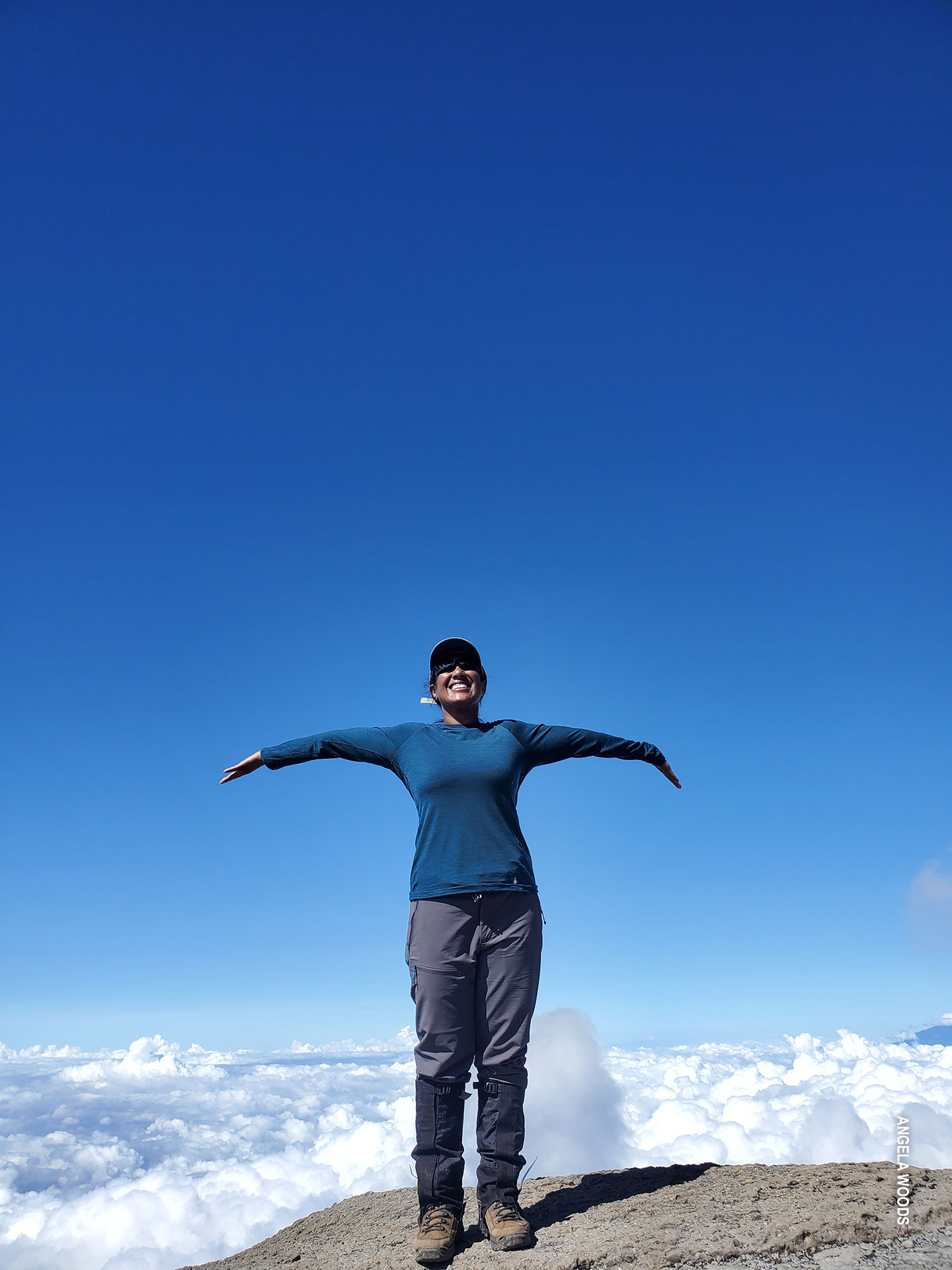
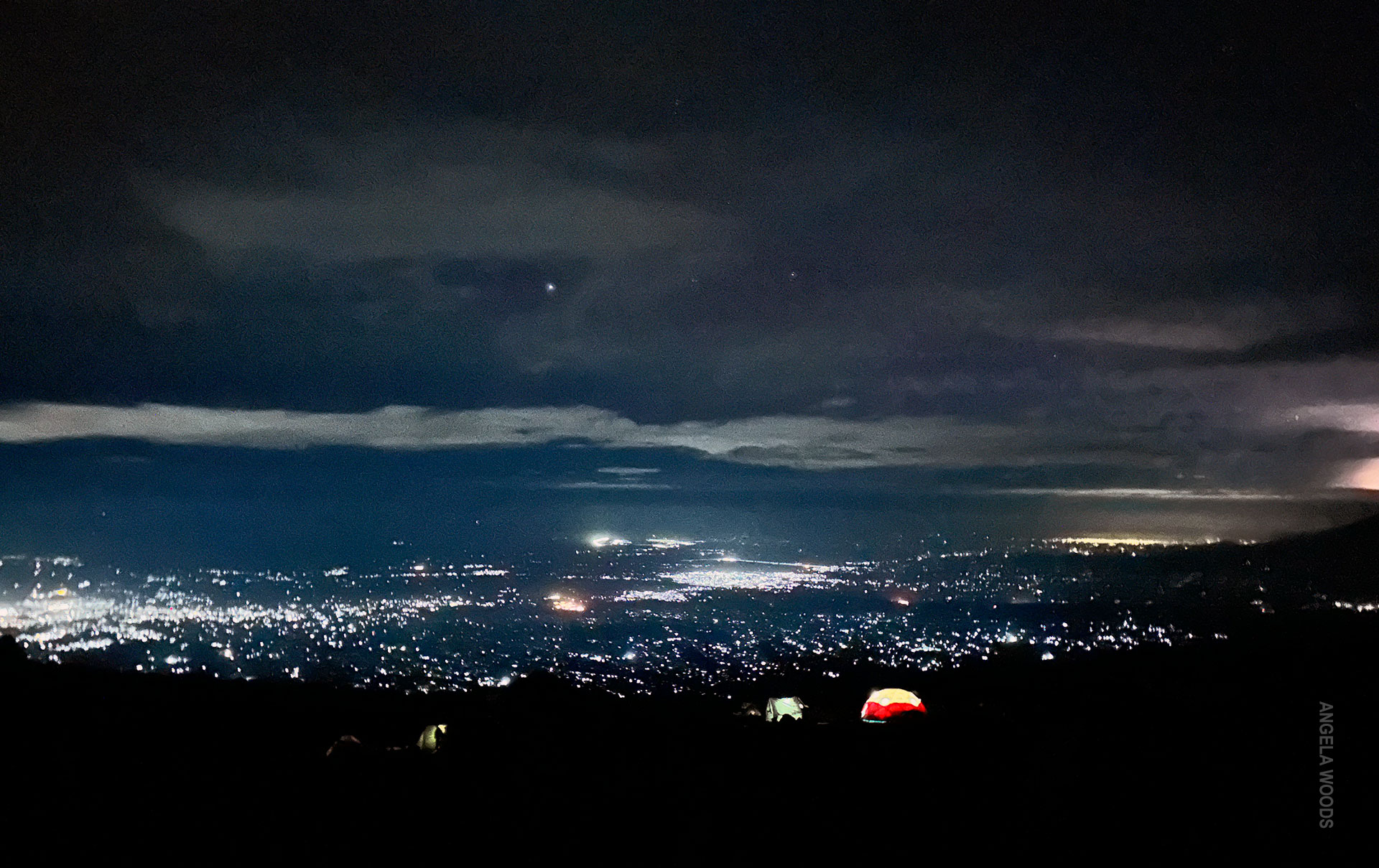
“The clouds create an ocean-like horizon,” says Angela, “and the undercast is magical – when the clouds cleared, we had stunning views of the valleys below us with Moshi, Arusha, and Mount Meru in the distance.”
You’re exposed, but with Thomson’s help, equipped
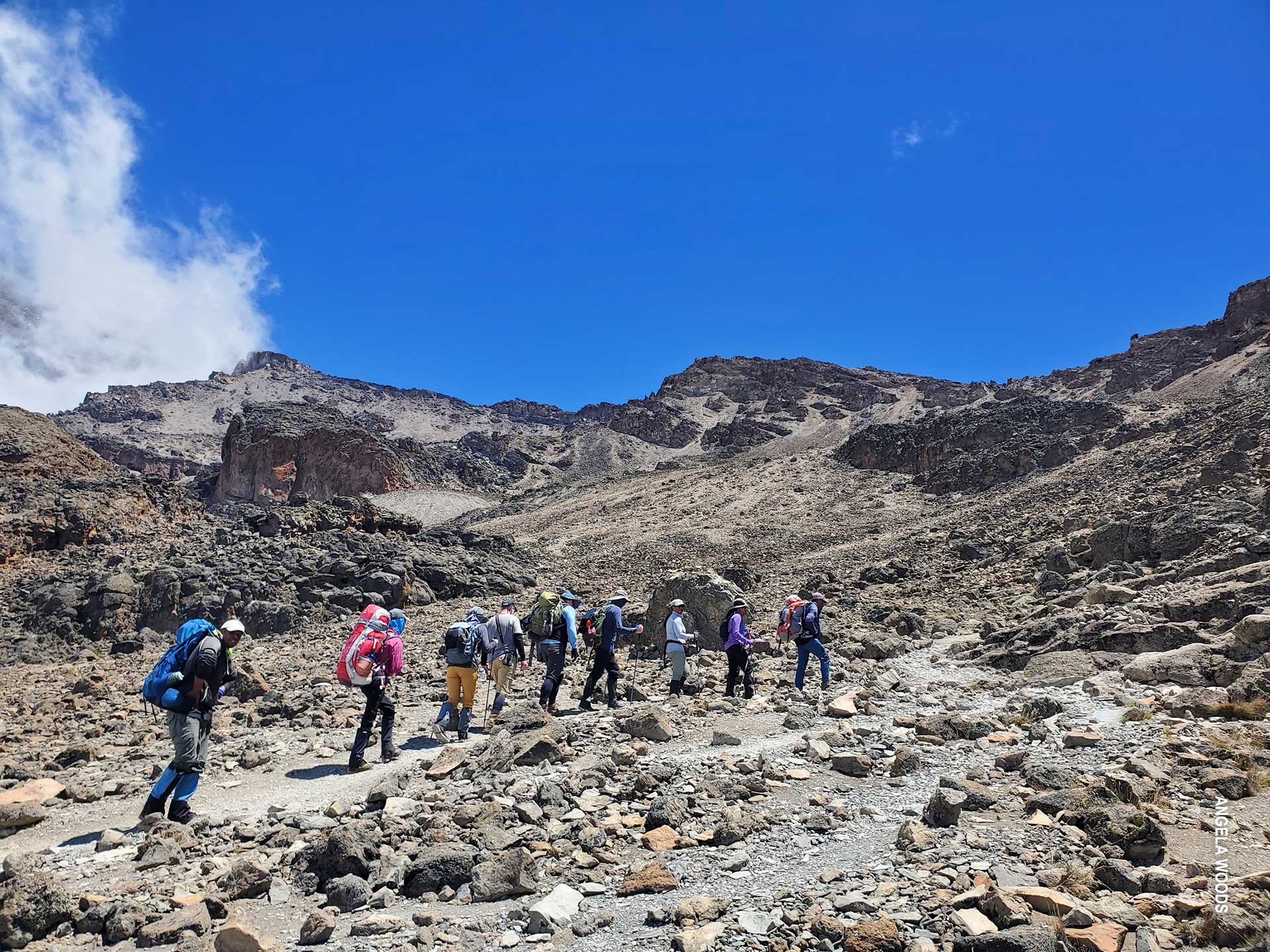
![]() As you ascend, the effects of altitude become more pronounced. In addition to changes in your breathing, the thinner air provides less protection from UV rays, making the sunlight more intense. Even though you’re at elevation, it can feel quite warm during the day.
As you ascend, the effects of altitude become more pronounced. In addition to changes in your breathing, the thinner air provides less protection from UV rays, making the sunlight more intense. Even though you’re at elevation, it can feel quite warm during the day.
TIPS:
-
-
- Be sure to apply ample sunscreen to your face and any exposed skin
- Always wear your sunglasses
- Don’t forget SPF for your lips
-
![]() Once the sun sets, you’ll want to have your warm gear handy as temperatures at night in the alpine desert can plummet to single digits.
Once the sun sets, you’ll want to have your warm gear handy as temperatures at night in the alpine desert can plummet to single digits.
TIPS:
-
-
- Bring a heavier layer to the dining tent because the air will be colder when you exit. It makes the short trip to your tent more manageable!
- Wear a beanie while you sleep to help keep your core temperature up.
-
![]() Like all deserts, the alpine desert on Kili is dry – it receives less than 10 inches of rain per year. Add the wind and sun, which also have dehydrating effects, and it’s a dryness triple whammy. As you trek through the alpine desert, you may be working hard but your perspiration will evaporate. Don’t let the absence of sweat fool you into thinking you don’t need to drink as much water.
Like all deserts, the alpine desert on Kili is dry – it receives less than 10 inches of rain per year. Add the wind and sun, which also have dehydrating effects, and it’s a dryness triple whammy. As you trek through the alpine desert, you may be working hard but your perspiration will evaporate. Don’t let the absence of sweat fool you into thinking you don’t need to drink as much water.
TIPS:
-
-
- Be sure to keep drinking lots of water.
- Cover your nose and mouth with a neck gaiter to reduce the risk of inhaling dust and particles, which can irritate lungs and sinuses.
- Wear Gaiters (over your pants and boots) to keep rocks and scree from getting trapped inside your hiking boots.
-
It’s part of the journey
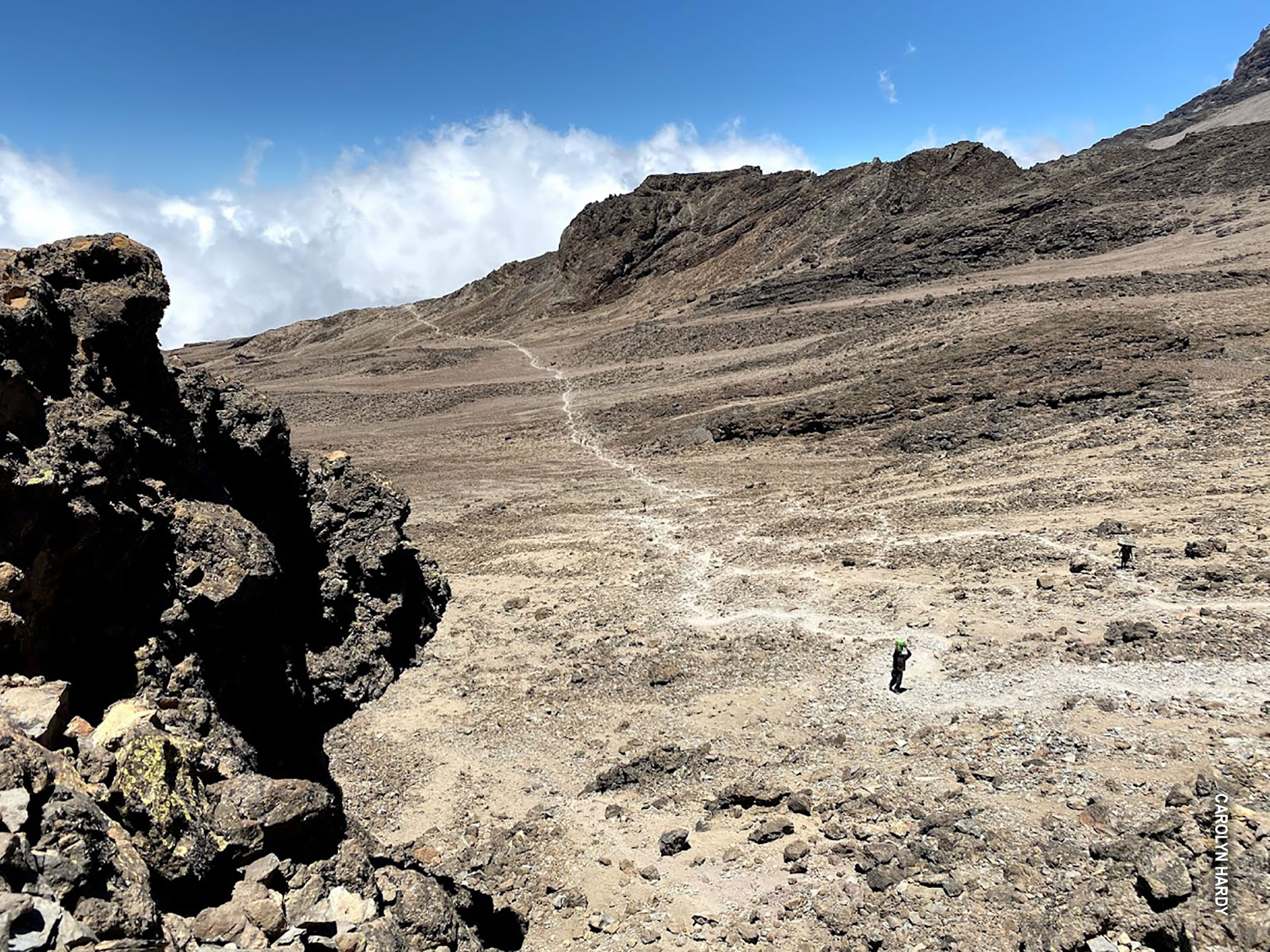
“The barrenness of the alpine desert might sound monotonous,” says Carolyn, “but this is the quiet overture before the climactic crescendo of the summit. The landscape is sparse, leaving you to focus on only one thing: the summit. Consider the alpine desert in those terms: it’s not the most memorable of Kilimanjaro’s environments; without it, the entire trek would be robbed of some of its most profound and contemplative sections.”
